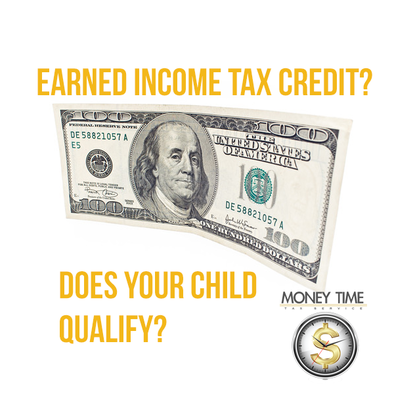By DeVon D.

The maximum amount of EITC for Tax Year 2015 is:
- $6,242 with three or more qualifying children
- $5,548 with two qualifying children
- $3,359 with one qualifying child
- $503 with no qualifying children
Your child must have a Social Security Number that is valid for employment and must pass all of the following tests to be your qualifying child for EITC:
Relationship
- son
- daughter
- adopted child
- stepchild,
- foster child2
- or a descendent of any of them such as your grandchild, brother, sister, half brother, half sister, step brother, step sister or a descendant of any of them such as a niece or nephew
Age
- At the end of the filing year, your child was younger than you (or your spouse if you file a joint return) and younger than 19
- At the end of the filing year, your child was younger than you (or your spouse if you file a joint return) younger than 24 and a full-time student
- At the end of the filing year, your child was any age and permanently and totally disabled.
Residency
Child must live with you (or your spouse if you file a joint return) in the United States for more than half of the year.
Joint Return
The child cannot file a joint return for the tax year unless the child and the child's spouse did not have a separate filing requirement and filed the joint return only to claim a refund.
IMPORTANT: Only one person can claim the same child. If a child qualifies for more than one person and one of the persons is a parent or parents, the non-parent can claim the child only if their AGI is higher than the parent(s). If the child qualifies another relative and the parent AGI rules do not apply, the taxpayers choose. If more than one person claims the same child, IRS applies the tiebreaker rules.
See IRS Qualifying Rules Definitions @ https://www.irs.gov/Credits-&-Deductions/Individuals/Earned-Income-Tax-Credit/Qualifying-Child-Rules
 RSS Feed
RSS Feed